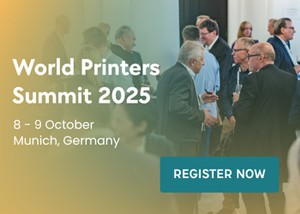Fairfax thinks everything about tabloid is just right (except the name); designer Mario Garcia believes A4 is ideal.
But a Dutch printer and designer believes a smaller, A5 product might be even better.
At the World Printing Summit in Hamburg, Germany, on Tuesday, Koos Staal unfloded his plan for the future of newspapers… literally. He showed a prototype made from a single broadsheet page.
Presented as A5 size, it opens like a paper flower, and takes half an hour to read. Stall (pictured) also showed a product twice the size – two page broadsheet pages, folded to A4 – which you can read in 45 minutes.
Following the discussion, Koninklijke BDU sales director Martin van Ee said these ultra-compact newspapers were likely to have targetted content and distribution. They would also have smaller print runs – the product creating a reputation for environmental friendliness – and link with smartphones and tablets.
Mobile and print are hand-in-hand at the conference, with delegates urged not to neglect print in the digital rush. Eamonn Byrne, business director of UK-based The Byrne Partnership, reminded delegates that print revenues were still funding much of the digital development at newspaper companies.
While print advertising is declining and digital advertising is growing, digital only accounted for 2.2 per cent of all newspaper advertising globally in 2011, according to WAN-Ifra’s annual World Press Trends survey.
When it comes to print, “we know we’re on the downside of the production cycle, but we have no idea how long that period will be. It could be 50 or 100 years,” he says. “What we’re looking at over the next two, three or five years – (is that) the money is still all in print.”
Later, Larry Kilman, deputy chief executive of organisers WAN-Ifra had another reason for not neglecting print: “Maintaining adequate reporting teams is a great challenge in this transformational media age, and the revenues provided by print operations continue to play a major part in ensuring that newspaper companies carry out their essential role in society,” he said.
“The debate really should not be around print versus digital, but how the two media work together.”
The two-day event concludes today.

















Comments